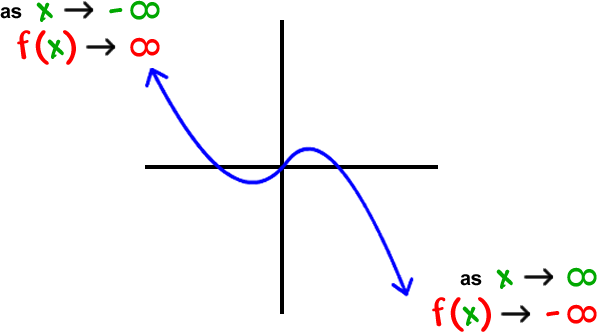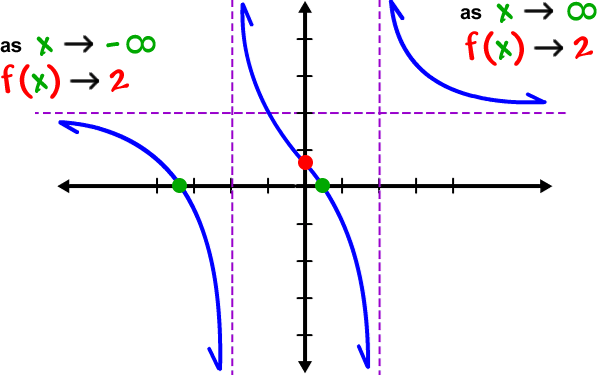Remember end-tail behavior? What's going on with those tails?


This was called "finding limits."
One of the things math geeks get all jazzed about in Calculus is seeing what happens when ![]() and
and ![]() .
.
We can do this with these rational function critters, too. The key here is that horizontal (or slant) asymptote.
Check it out:


Remember... GRAPHS HUG ASYMPTOTES!
As x gets bigger and bigger (goes to the right), our graph gets closer and closer to that asymptote (which is y = 2.) It will never actually hit the asymptote ( f(x) will never = 2), it will just get closer and closer. This is why we use the word "approaches." It's the same story on the left when x is getting smaller and smaller.